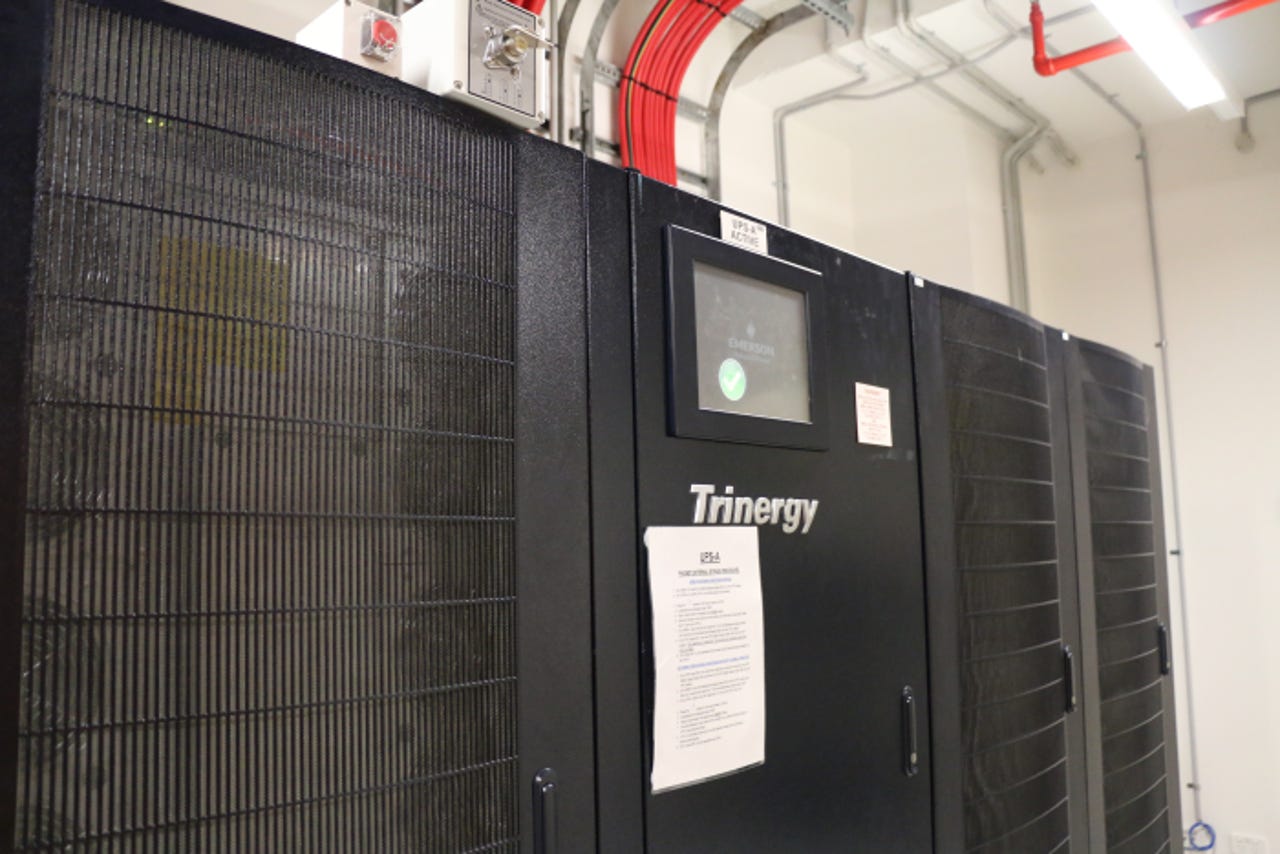Pacnet's expanded Sydney datacentre: Gallery

Telecommunications services provider Pacnet last week held an event celebrating the expansion of its Sydney CBD datacentre and its partnership with services provider E-Bit Systems.
Pacnet first launched the initially AU$40 million facility in February 2011 with 260 racks.
It completed the expansion of the datacentre in June this year, adding 360 racks to support its cloud and co-location services as part of the company's strategy to grow its Asia-Pacific presence.
"As the pulse of the Australian economy, Sydney is a key part of our expansion plans," Pacnet president of managed services Jim Fagan said at the time.
The company now takes up three levels with its datacentre in the Liverpool Street, Sydney, building, which has been used to store datacentres since the 1970s.
In March, Pacnet also announced plans to open an SG$90 million datacentre in Singapore. It has its headquarters in Singapore and Hong Kong, with offices also located in China, Australia, the US, Japan, South Korea, the Netherlands, India, Indonesia, Malaysia, the Philippines, Taiwan, and Thailand. It has 18 datacentre facilities in the world, including two in Australia, making its content delivery network (CDN) attractive to major web providers looking to deliver content in Australia.
Founded in 2000, E-Bit Systems is an IT management consultancy that provides enterprise resource planning (ERP), customer relationship management (CRM), business intelligence (BI), and systems integration solutions for small and medium enterprises (SMEs) in Australia and New Zealand.
Stressing reliability, availability, scalability, security, and resilience, Providence Solutions Australia, a division of E-Bit Systems, focuses on availability and continuous computing rather than recovery; emphasising preventing downtime over speeding up recovery time. The Sydney Pacnet datacentre is one such facility that it provides these services for.
"Efficient storage, access, and delivery of digital data has become critical," said Nigel Stitt, Australia and New Zealand CEO of Pacnet. He said the partnership between E-Bit and Pacnet will provide customers with a one-stop shop for their datacentre needs.
Pacnet's datacentre facility has dedicated hardware-as-a-service racks for the pay-as-you-go model of doing business as a more flexible solution.
As a Tier III datacentre, the Pacnet facility has an uptime service-level agreement (SLA) of 99.99 percent. In order to fulfil this SLA, the datacentre's disaster recovery system consists of a triple substation onsite to pair with the generators. The substations are linked to several active and passive uninterruptable power supply (UPS) systems, which are run in a chain wherein if one fails, the power goes to another. There are seven generators on the roof to provide in the event of power from the substation going out. The datacentre is on the city grid, meaning a significant portion of Sydney CBD would have to lose power for the substation to be affected.
"It's about how many nines of availability you can achieve ... what we are now getting into is the business applications — emails, CRM, databases — which are kind of sitting in the level three capability of four nines of availability; effectively, it's less than an hour of downtime in a year ... this is all achieved through software, not hardware," said Atul Thapar, managing director of E-Bit Systems.
The datacentre facility has multi-layered security, with a card swipe, fingerprint recognition (above), and surveillance cameras installed.

The UPS (above) units convert street power to DC to charge the batteries. Electrical mains go through the UPS at all times, keeping the datacentre running and the batteries charged; if power cuts out, it switches over to the batteries inside the UPS.
"UPSes, they protect you from power failures, but they also have their limitations. They don't give you 100 percent protection," Thapar said.
The datacentre houses dozens of power distribution units (PDUs) and static transfer switches (STS) on each level. The PDU (right) is fitted with several outputs for distributing electrical power to the racks, while the STS is used to rapidly balance the power load between two sources, minimising downtime within the datacentre and protecting the equipment from power surges and slumps.
Chilled water (left), kept at 6.5 degrees Celsius, is fed through a fully isolated loop into the computer room air conditioning (CRAC) units to cool the air in the server rooms.
The CRAC units (right) surround the datacentre, cooling the air for a consistent 22 degrees Celsius air temperature over each entire level.
Fan speed is controlled by the CRACs, which send air flow down into the floor and up through vents in front of the racks. The air coming through the vents is 17 degrees Celsius, which enables a guaranteed front-of-rack temperature of 21 degrees Celsius.
The servers belonging to Australian Prudential Regulation Authority (APRA)-regulated companies have to be separated from the other racks by cages as per the statutory authority's requirements. The government has also mandated that the racks be double thick in these cases.
Access to these high-security racks is by both a swipe card and a fingerprint scanner.
Pacnet runs its communications cables (left) above the racks, utilising both fibre and copper on all levels. The cables for powering each of the components are stored below the floor (right), with easy access through numerous removable floor panels.
Pacnet's Network Operations Centre operates 24/7, with staff always on hand to attend to any issues that may arise with the hardware and middleware.
The Network Operations Centre has maps of each datacentre level's internals on display, showing system and hardware errors or any other issues being reported. Pacnet has teams onsite to monitor the panels, flag problems, and repair any hardware or middleware failures to ensure continued uptime.
Pacnet's brand new, as yet still unused datacentre expansion level will take 416 standard 19-inch server racks. The PDU and STS units have already been installed, and the cooling vents are in place.
The new datacentre has plastic yellow housing tracks for the fibre-optic cables to run through above the racks. The fibre power boxes can be taken apart anywhere, with Pacnet's Stitt stressing the "modular" way in which this new expansion has been built. The modular datacentre can be upgraded without it having to power down, and allows greater flexibility for customers to scale their capacity.